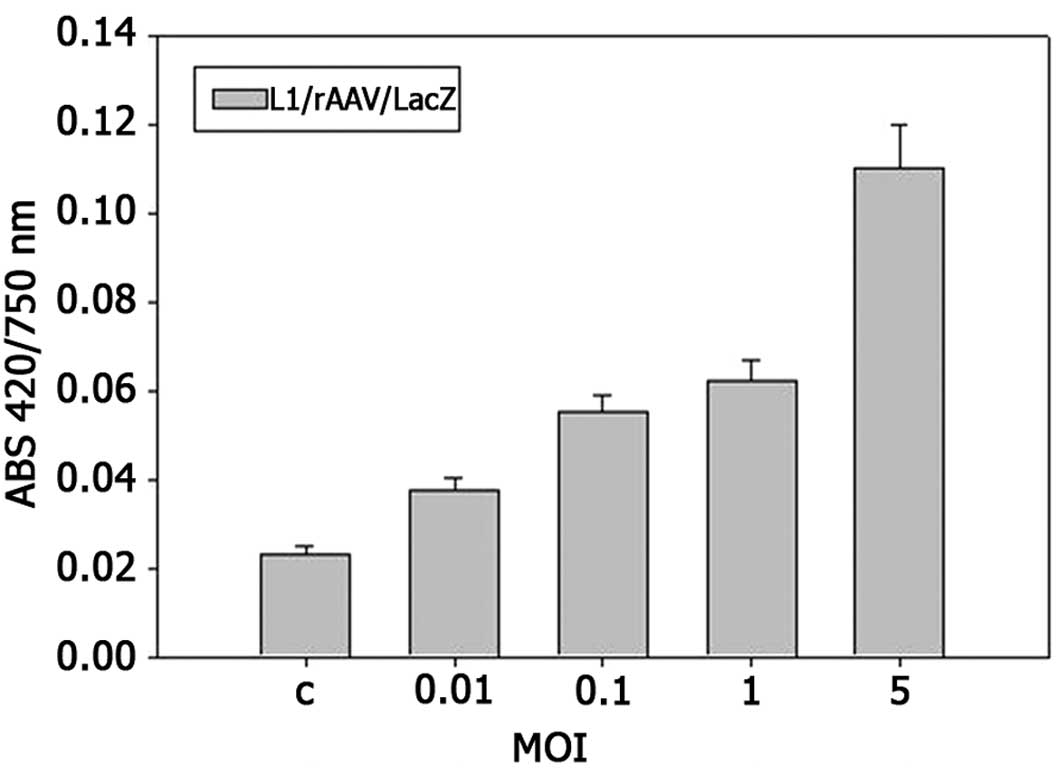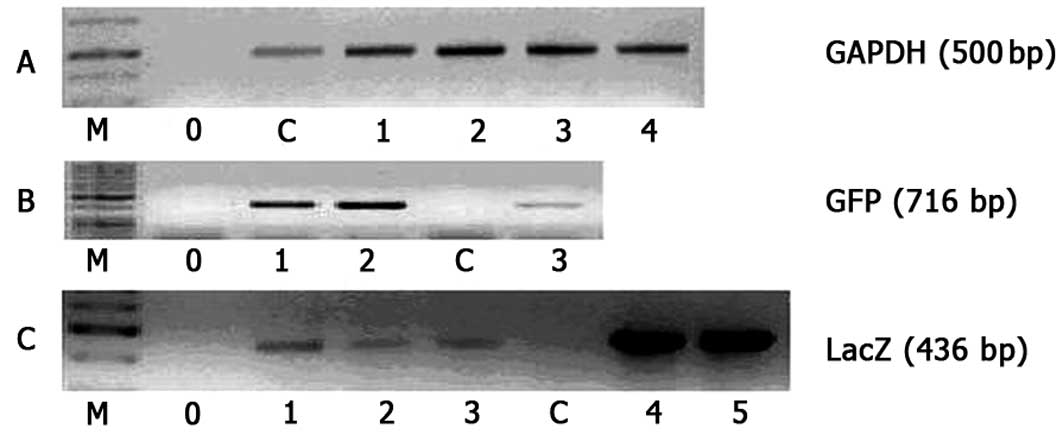Recombinant adeno-associated viruses (rAAV2) facilitate the intraperitoneal gene delivery to cancer cells
- Authors:
- Maciej Malecki
- Robert Proczka
- Joanna Chorostowska-Wynimko
- Paweł Swoboda
- Anna Delbani
- Jan Pachecka
-
View Affiliations
Affiliations:
Department of Cell Biology, Centre of Oncology, Maria Sklodowska-Curie Memorial Institute, Medical University of Warsaw, Warsaw, Poland
- Published online on: January 1, 2010 https://doi.org/10.3892/ol_00000032
-
Pages:
177-180
Metrics:
Total
Views: 0 (Spandidos Publications: | PMC Statistics:
)
Metrics:
Total PDF Downloads: 0 (Spandidos Publications: | PMC Statistics:
)
This article is mentioned in:
Abstract
Peritoneal dissemination of cancer cells is characteristic of advanced stages of ovarian, breast and lung cancers, and is associated with poor patient survival. The presence of cancer cells in effusions complicates treatment protocols, while cell eradication is seriously limited. One of the novel options available is cancer gene therapy with recombinant adeno-associated viruses. This combination represents the most promising gene delivery vehicles to neoplasmatic cells within serosal cavities due to their unique properties that include the ability to infect proliferating cells of broad host range, as well as the potential of long-term expression. Recombinant infectious adeno-associated virus serotype 2 particles (rAAV2) were produced in a helper-free system using an AAV-293 packaging cell line, and quantitatively analyzed by real-time PCR. Balb/c mice intraperitoneally pre-injected with L1 cancer cells were treated with different doses of rAAV2. Subsequently, the mice were sacrificed and intraperitoneal effusions were analyzed for rAAV presence and rAAV/β-galactosidase (LacZ) vector efficiency in order to infect cancer cells within the peritoneal cavity. We reported an efficient infection of L1 cancer cells disseminated into the peritoneal cavity by rAAV2. The expression of reporter genes (GFP and LacZ) attributable to the rAAV cell uptake was closely dependent on an applied multiplicity of infection ratio (MOI). The highest infection efficiency was observed at a MOI of 50 and 200. Our study confirmed the ability of adeno-associated viruses to facilitate gene transferability to cancer cells disseminated in the serosal cavity, as well as the potential usefulness of these viruses as a new approach in cancer gene therapy.
View References
|
1
|
Reibenwein J and Krainer M: Targeting
signaling pathways in ovarian cancer. Expert Opin Ther Targets.
12:353–365. 2008. View Article : Google Scholar : PubMed/NCBI
|
|
2
|
Cannistra SA: Cancer of ovary. N Engl J
Med. 351:2519–2529. 2004. View Article : Google Scholar : PubMed/NCBI
|
|
3
|
Blaese RM, Culver KW, Miller AD, et al: T
lymphocyte-directed gene therapy for ADA-SCID: initial trial
results after 4 years. Science. 270:475–480. 1995.PubMed/NCBI
|
|
4
|
|
|
5
|
Porteus MH, Connelly JP and Pruett SM: A
look to future directions in gene therapy research for monogenic
diseases. PLoS Genet. 2:1285–1292. 2006. View Article : Google Scholar : PubMed/NCBI
|
|
6
|
Raty JK, Lesch HP, Wirth T and
Ylä-Herttuala S: Improving safety of gene therapy. Curr Drug Saf.
3:46–53. 2008. View Article : Google Scholar
|
|
7
|
Le Bec C and Douar A: Gene therapy
progress and prospects-vectorology: design and production of
expression cassettes in AAV vectors. Gene Ther. 13:805–813.
2006.PubMed/NCBI
|
|
8
|
Atchison RW, Casto BC and Hammon WM:
Adenovirus-associated defective virus particles. Science.
149:754–756. 1965. View Article : Google Scholar : PubMed/NCBI
|
|
9
|
Małecki M, WoŸniak A and Janik P: Wirusy
związane z adenowirusami (AAV). Postępy Biochem. 54:57–63.
2008.
|
|
10
|
Flotte TR: Gene therapy progress and
prospects: recombinant adeno-associated virus (rAAV) vectors. Gene
Ther. 11:805–810. 2004. View Article : Google Scholar : PubMed/NCBI
|
|
11
|
Isayeva T, Ren C and Ponnazhagan S:
Recombinant adeno-associated virus 2-mediated antiangiogenic
prevention in a mouse model of intraperitoneal ovarian cancer. Clin
Cancer Res. 11:1342–1347. 2005.
|
|
12
|
Isayeva T, Ren C and Ponnazhagan S:
Intraperitoneal gene therapy by rAAV provides long-term survival
against epithelial ovarian cancer independently of survivin
pathway. Gene Ther. 14:138–146. 2007.PubMed/NCBI
|
|
13
|
Li J, Zhou J, Chen G, et al: Inhibition of
ovarian cancer metastasis by adeno-associated virus-mediated gene
transfer of nm23H1 in an orthotopic implantation model. Cancer Gene
Ther. 13:266–272. 2006. View Article : Google Scholar : PubMed/NCBI
|
|
14
|
Zolotukhin S, Byrne BJ, Mason E, et al:
Recombinant adeno-associated virus purification using novel methods
improves infectious titer and yield. Gene Ther. 6:973–985. 1999.
View Article : Google Scholar : PubMed/NCBI
|
|
15
|
Davidson B: Biological characteristics of
cancers involving the serosal cavities. Crit Rev Oncog. 13:189–227.
2007. View Article : Google Scholar : PubMed/NCBI
|
|
16
|
Malecki M, Kolsut P and Proczka P:
Angiogenic and antiangiogenic gene therapy. Gene Ther. 12:159–169.
2005. View Article : Google Scholar
|













